Everything You Know About Plants is Probably True
Sculpture Gardens, Urban Gardens, Home Gardens, and the Wilds Beyond
I’ve always been impressed by people who know the proper names of things. My father was a landscaper who would refer to the hydrangeas and yews like old family friends. I, out of a teenager’s sense of duty, became an inside kid, never developing my botanical lexicon far beyond tree, flower, bush, weed. I can identify a stick with the best of them, and for my entire adult life up until now, that’s been enough.
But after my difficulties articulating the flavor of my favorite Thai soup, I’ve been hunting for more precise linguistic tools. A broader vocabulary makes it easier to pin down the squirmy parts of our sensory world and allows us to make finer distinctions between like things. The most unique fixtures of our lived experience get names. Like Zipporah, for example, who works at the coffee shop where I’m writing this. She remembers my name each time I come in. We don’t know anything else about each other, yet the names give us something tangible.
But what, exactly, do names give us?
It was with this question that I stood at the edge of the woods with nothing but a canteen, machete, and illustrated plant identification guide. Not really. I just opened my email and found this:
That’s from Polly, the Executive Director of the Lynden Sculpture Garden. It sounds like an excerpt from a forthcoming short story collection, but actually, it’s taken from Lynden’s newsletter. I look forward to them each month, and they’ve recently succeeded in drawing me to the garden itself for one of Claudia Orjuela’s Moon Walks, and hopefully soon, birding with Chuck Stebleton. I could talk endlessly about Lynden and what a great place it is to learn the names of things, whether it’s the wildlife, a local artist, or one of the historical sculptors behind the towering Modernist works. My favorite would have to be John Henry’s Pin Oak I.
I think what I like so much about Polly’s writing is it makes the growth of plants feel like news. I don’t know what a poppy looks like, but now that I’m aware of their mad waving, it seems like an urgent question. I reread her words and tried to tease out an image. Without Googling, the flower emerged in my imagination as a small, light brown, asymmetrical bud. I guess I was thinking of a half-popped popcorn kernel.
Which is why you should always Google before writing the article. I would have never guessed it looked like a flaring salsa dancer’s dress, with all those little black whatchacallems in the middle, all gathered around the big yellow thing. You can really picture it waving madly. You can really see why that woman, what’s her name, wrote that poem about them. Mary Oliver.
The poppy’s revelation fueled me, but I needed more. Who knows what plants are out there, and what kinds of unintuitive names they must have? I didn’t hesitate, but shut my laptop and marched straight out the door, into the warm embrace of summer. Then I came back for my shoes, put them on, and marched back out into the warm embrace of summer.
Luckily for me, Milwaukee is spoiled for plants. For the six years I lived in Chicago, I learned to get all my forest bathing in between the trees growing out of the sidewalk. It’s nothing against them, but you do lose some of the thrill of nature when it comes at evenly-spaced intervals.
Milwaukee often feels like it’s losing the war against nature. The building I live in has been almost completely devoured by Boston Ivy while four-story Norway maples pour shade onto the street outside. Much of it is wild, like the grass and clover filling empty lots, or the two blocks worth of oak and elm on either side of the river, but in summer it seems like everyone has their own little garden. Peonies, roses, and something called Alpine anemone dot the sidewalk with color. If you follow the flowers toward the lake, you’ll be met by a steep bluff guarded by a tangle of robinia.

Some of the names stick with me better than others. Robinia is so oddly satisfying to say out loud, I don’t think I’ll ever forget it. On the other hand, I end up sticking the name peony on pretty much any small, pink, scruffy flower. It’s all a work in progress, and I have plenty of time to practice, walking the city. I can wander for an hour or two at a time, doing little else but taking pictures of weeds. I never feel aimless because when you have a name for everything, you always feel like you’re somewhere.
And some places even more so. It wasn’t long after my newfound fascination for botanical nomenclature that I found myself seeking out parts of the city I’d never been to. If I hadn’t been paying attention, I might have missed the Victory Garden Initiative entirely. They have a thin mulched path leading to a stretch of land tucked between the houses on Concordia Avenue. It doesn’t look like much from the sidewalk, but once inside, you can tell you’re somewhere.
VCI is a grassroots (they love a pun) organization that aims to connect people with the food they eat. They work from the model of the World War era victory garden, except rather than global fascism, they’re fighting the lack of food security in the local community. But I bet they probably don’t like fascists either.
When you walk past the big mural of fruits and vegetables, you’ll find rows of tidy plots. There was a sign encouraging me to help myself to the produce, though nothing was quite ripe and I satisfied myself with pictures. I couldn’t quite name all the vegetables in their adolescent state, but I thought I saw kale, cabbage, and lettuce. There were trees with apples, pears, cherries, and lingonberries.
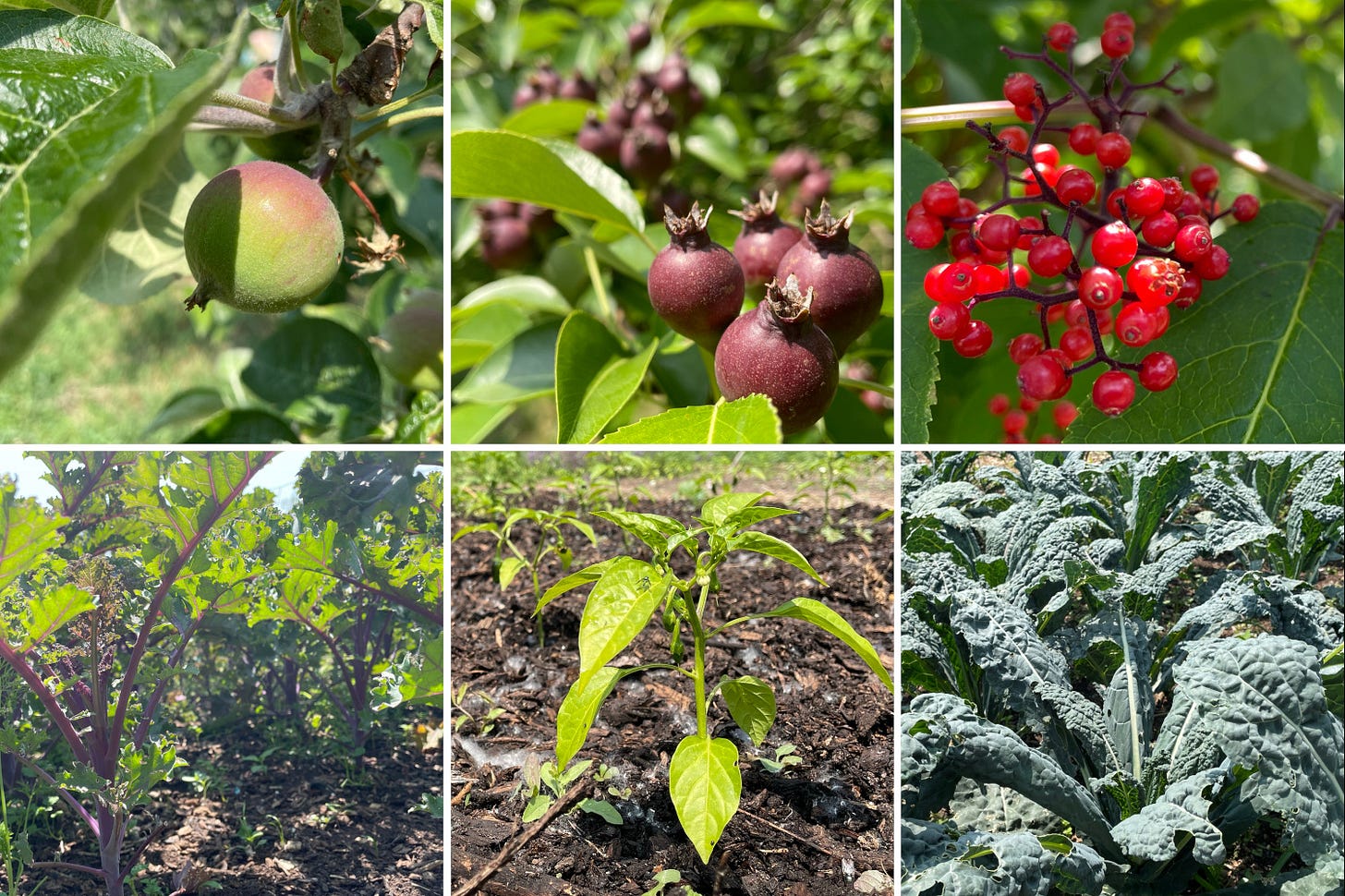
You get the same satisfaction from collecting plant names as you do building any collection. It’s the feeling of putting something in its proper place, giving it a home without sacrificing any of the mystery that drew you to it in the first place. I don’t have any deeper understanding of kale or elderberries now that I can identify them in the wild, but I do have a fuller appreciation. Now when I walk by a stack of pears at the grocery store, I feel like I just crossed paths with an old roommate, or the professor I had a crush on. Or maybe something like a friend
But it’s more than that!
That’s right. You thought the article was over just because I was getting sentimental. Nope. Because here’s the thing about plants: They’re everywhere. And they all have names. And if you keep walking, you’re bound to find more. You don’t have to go to any great lengths. Just outside your door, there’s almost certainly some crabgrass engaged in a life-or-death struggle against hungry insects and errant footfall. I’m sure there’s no city in America that doesn’t have thistles taller than I am. But will identifying all the shepherd’s purse, nutsedge, and bindweed on your block offer any kind of tangible benefit? Probably not. But I guess it depends on the sort of life you live.
In this case, I simply turned my nose to the wind and drifted away from the urban farmstead I’d just discovered. The surrounding neighborhood turned out to have an ecosystem just as diverse.
The area is called Harambee, which comes from Swahili meaning pulling together. I can’t think of a more fitting epithet for the Victory Garden Initiative, though the plants weren’t always so cooperative outside their fences. Many of them were beautiful, though rarely edible. I found several waving madly as poppies. Many didn’t seem to be looking out for anyone but themselves.
The blocks I walked had fewer apartments and more standalone homes. This opened the yards to a wider range of possibilities than I see on my home turf. I found modest flowerbeds growing silently under bedroom windows. Stately yews marking their territory. Blooms well past their prime, but looking more photogenic for it.
Luscious or decrepit, eccentric, monumental, aged or ephemeral, the more I saw, the more I wanted to communicate the particular qualities of what was there. Soon I had run smack into the same problem I had last time, with the soup.
Words can only carry us so far toward describing the variety life offers. And that’s why we need names. Because, at some point, you have to stop trying to describe and settle for a definition. I could continue to chuck adjectives in the hope you’ll get some sense of a daffodil losing its petals to the sidewalk. But it might just be easier to say “daffodil” and trust you to take it from there.
I believe you can discover the quality of a place by looking at its plants. The names are important, but also how they grow. In Harambee, they sprout up everywhere they can, in empty lots and through the cracks in sidewalks. There is no shortage of well-tended gardens and dedicated gardeners, but just as many neglected peonies. There’s at least one dude on the block sporting an enormous, half-dead pine. If only there was one everywhere.
As for the original question, what do names give us, I can only take a running shot at an answer. Names create symmetry. When we call a particular flower, barista, or neighborhood by its name, what we’re really doing is singling them out from all other flowers, baristas, and neighborhoods. We’re reminded of the qualities they share with the rest of their kind, as well as the ones they don’t. After learning about the plants in Harambee, I find I have something definite to say about the plants in Harambee, versus the ones in my neighborhood, or yours, or anywhere else. What’s kind of weird, or magical, is that all these plants have somehow given me a small insight into the character of the neighborhood itself. And if I’m looking for a way to describe that character, I have the name readily at hand.

I, uh, kind of went out on a limb for this one. (Not a pun) So if you made it to the end, thanks! Next time I think I’ll try to keep things more down-to-earth. (I apologize) Probably, I’ll still be naming things, but will make sure to have more people involved. In fact, let’s make it all about people and the things they do. Great. Awesome. See you then.




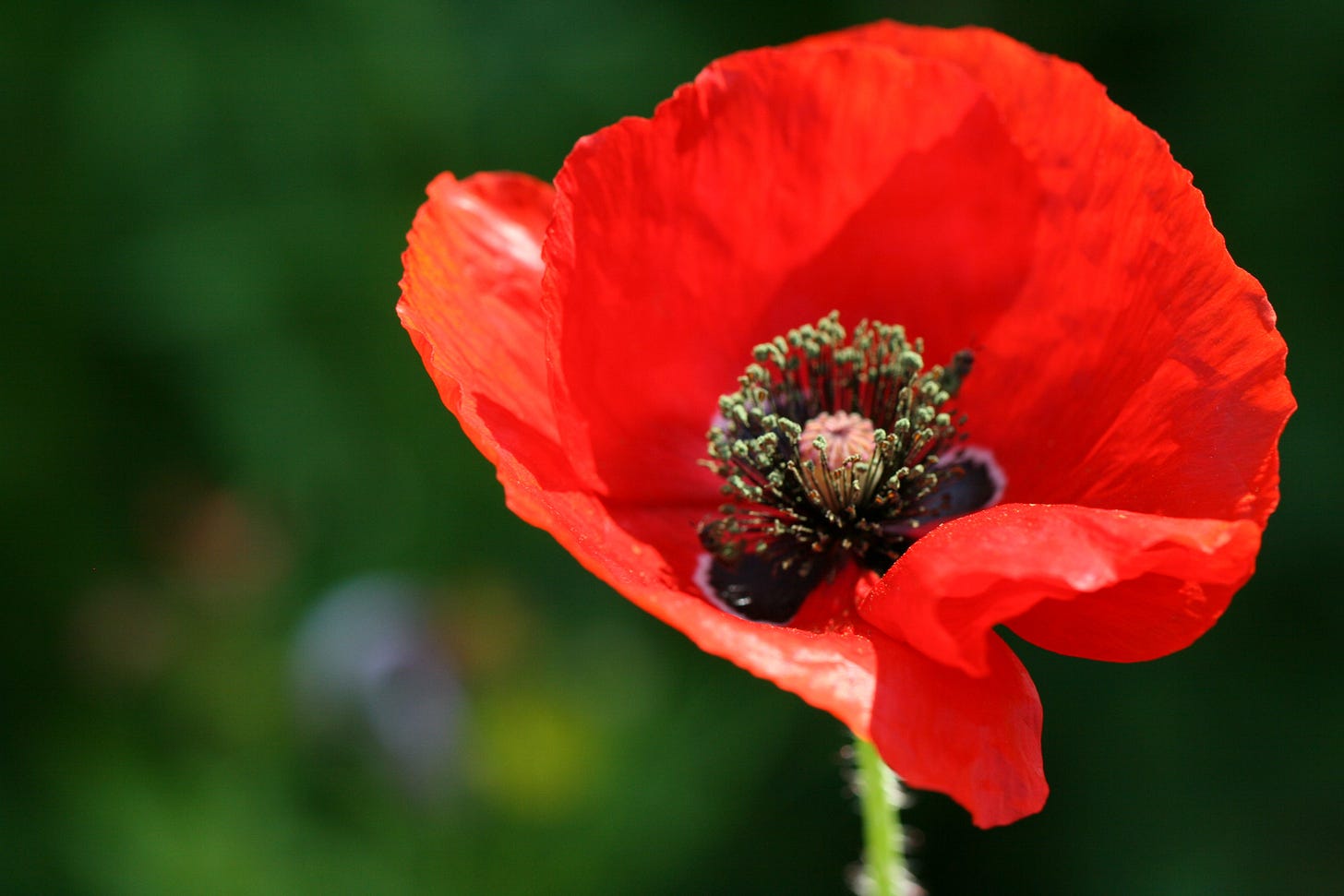

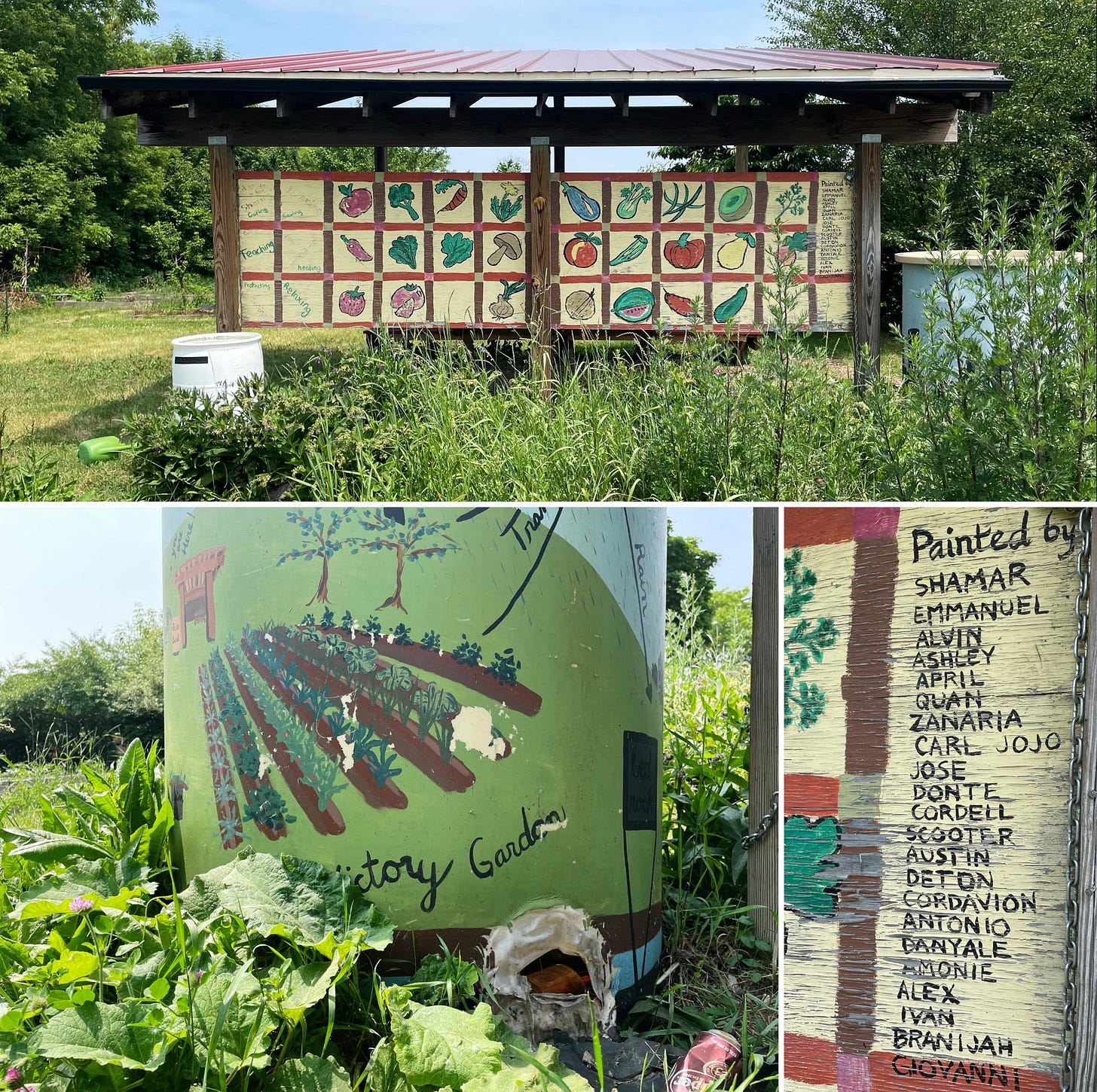

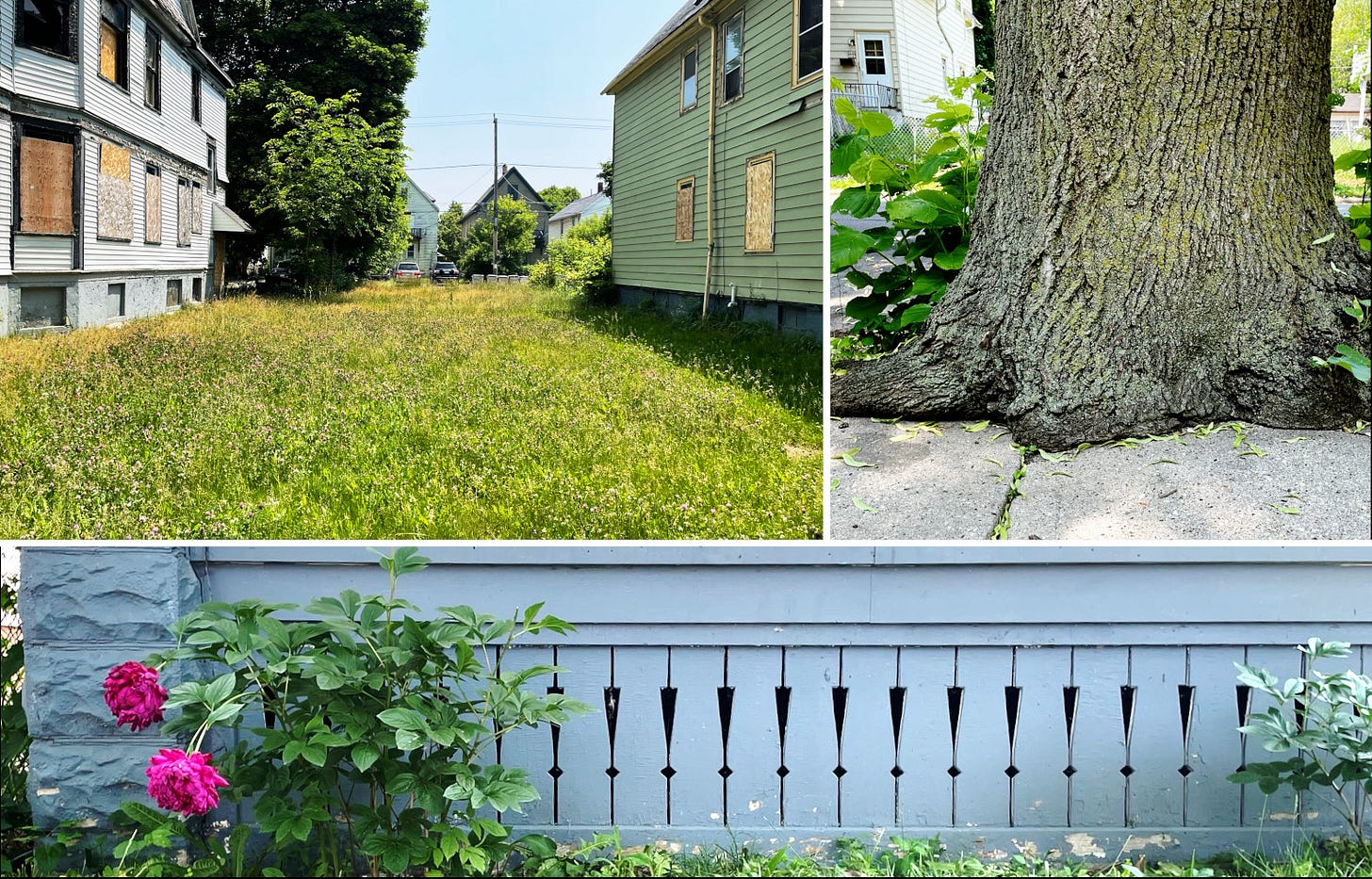
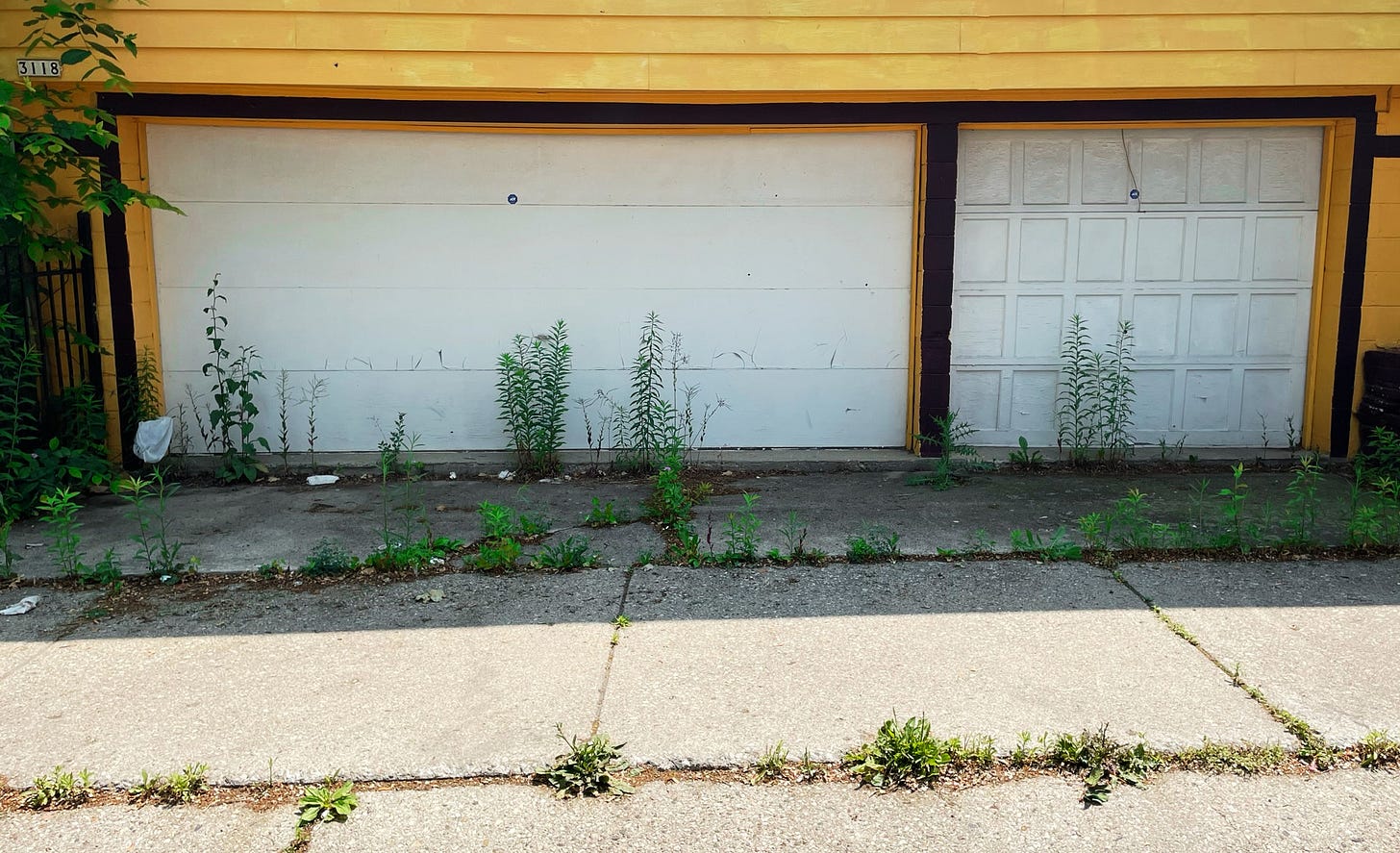
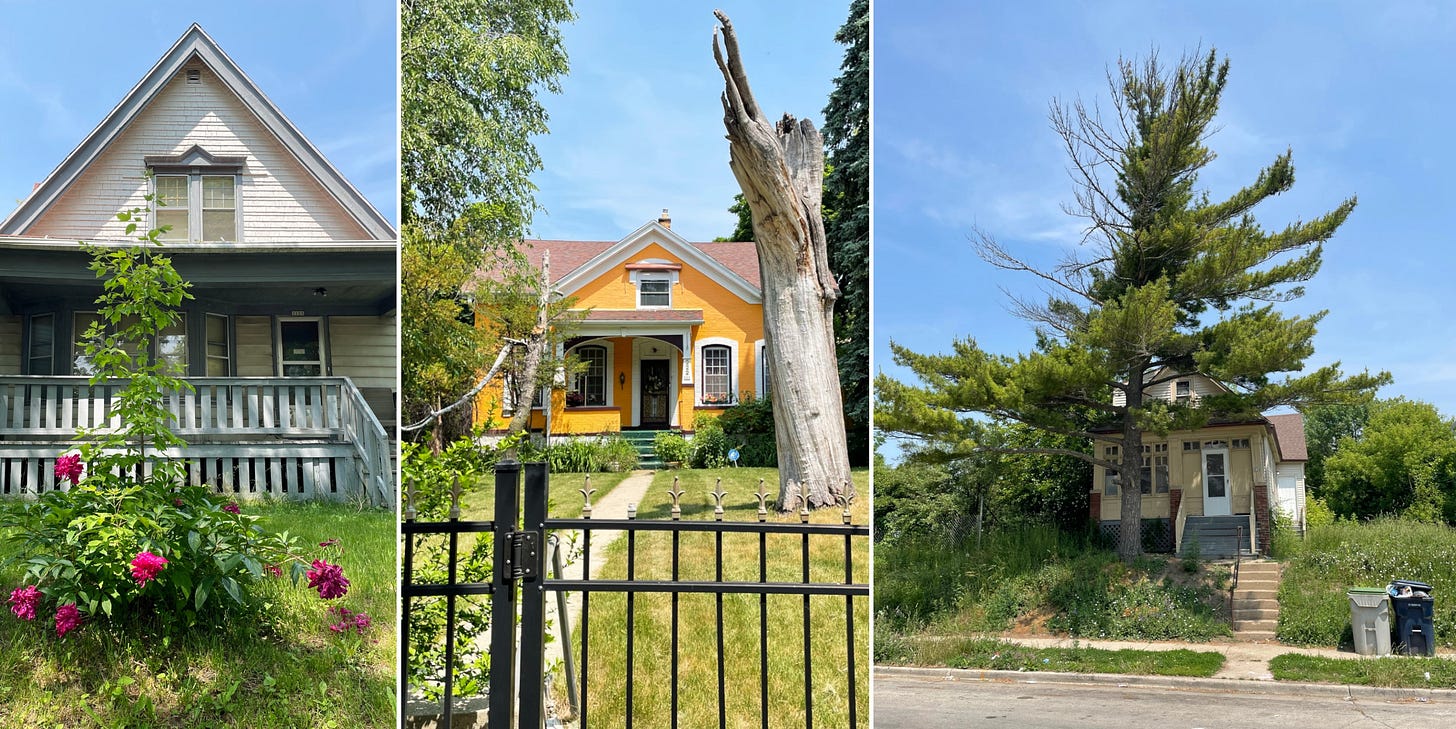
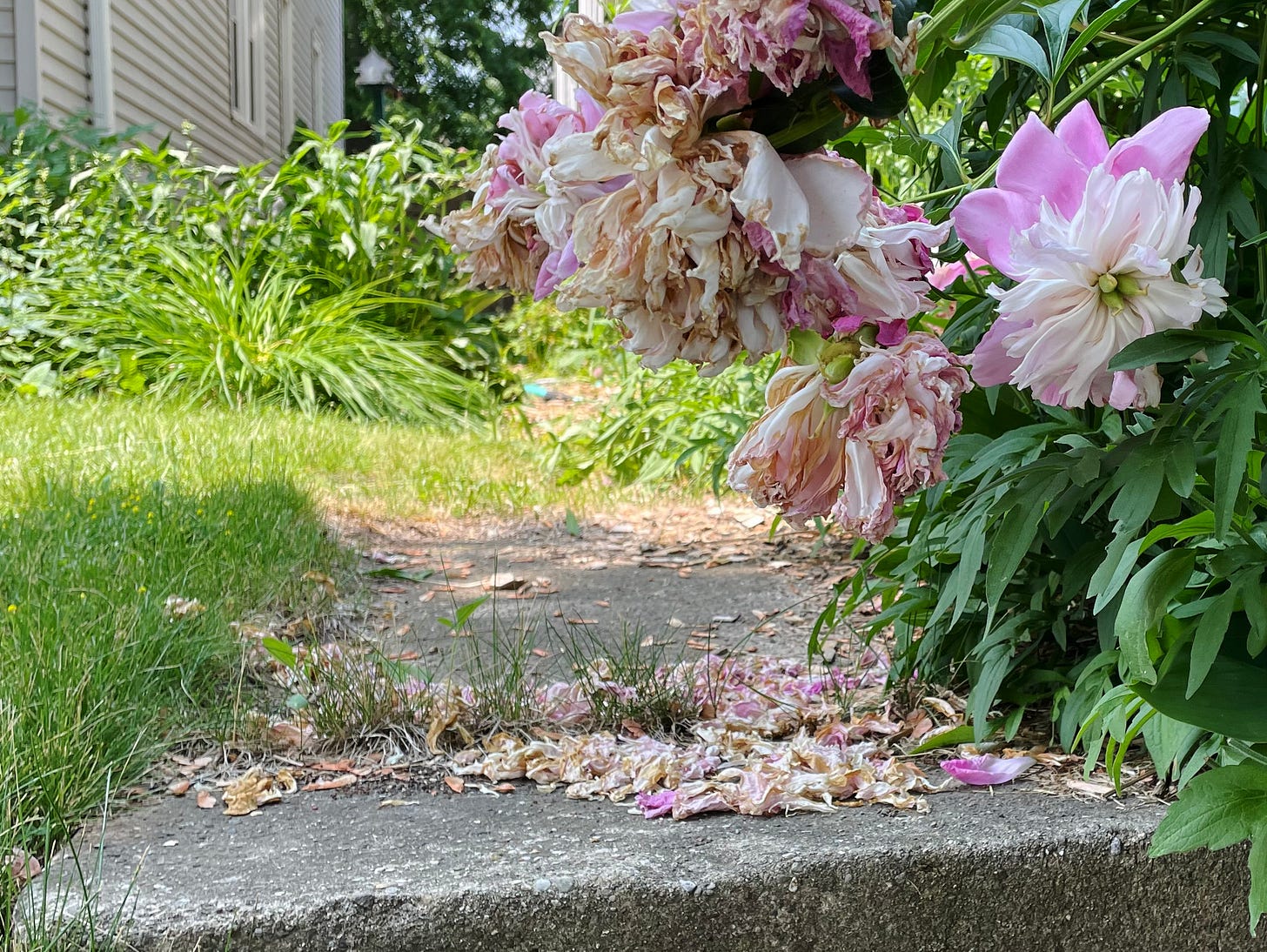
That one is a Peony!! The blossoms last only a couple weeks and they are so fragrant. The ants love them when they droop over like that because of how sweet they are. They have nice dark green foliage that lasts for most of the season after the blooms as well. Love the post!
I so love this post! I have “Picture This” - one of the plant identification apps. I have a collection of photos and a notebook, with their names and how to care for them.